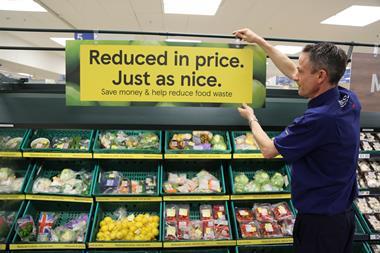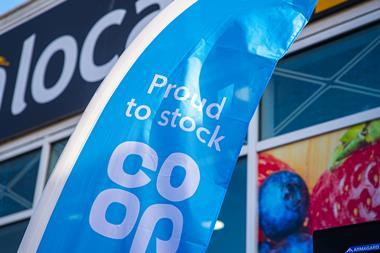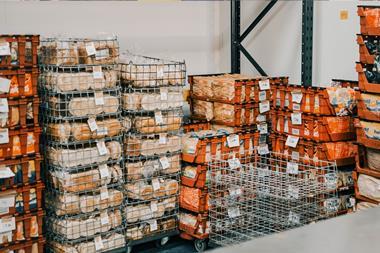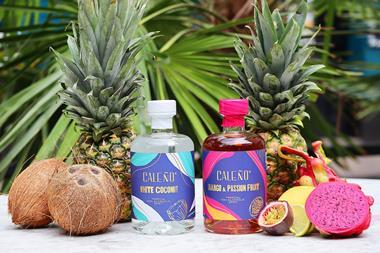
In this week’s column, I would like to write an open letter to CMA CEO Sarah Cardell.
I write in relation to the three investigations you are overseeing in relation to retail pricing during the cost of living crisis. The first two reports, which investigated the role of retailers in inflated fuel and food prices, were published on 23 July. Ahead of the completion of the third report, I wish to highlight a concern about the approach taken when investigating suppliers over profiteering.
This follows what I consider to have been a significant flaw in the CMA’s investigation on irregularities in supermarket retail pricing of fuel. That report found Asda and Morrisons, in particular, guilty of profiteering by ‘rocket and feather’ pricing – shooting the price up and then bringing it down more slowly. Just a few weeks later, the CMA cleared retailers of profiteering on their core food business, highlighting that the overall profit margins in the top 11 food retailers had dropped from 3.2% to 1.8%.
It is evident that Asda, which has helped anchor down petrol prices for years with low margins, chose to discount food more heavily instead, and left prices slightly raised on petrol to balance its margin mix. During the cost of living crisis, prioritising food over petrol for shoppers is a fair decision in my view. Asda, of course, makes these decisions at its own risk; it could lose shoppers and share of market if its judgement is wrong.
It is damaging and unfair to portray major retailers in this negative way. Clearly if these retailers had brought fuel prices down more quickly, they’d have lost even more profit. The media still refers to this report and its conclusions of profiteering, which were simply a shift in priorities. No one is thanking Asda for the role it has played for years in keeping petrol pricing down, instead it faces flak for choosing to discount other products at time of pressure.
In the investigation into suppliers, the CMA must avoid similarly naming and shaming big, branded businesses, and taking isolated cases out of wider context. An increase in cash profit or net profit margin is not proof of profiteering. In some cases, suppliers with trusted brands have benefited from a boost in sales and profit, but much has changed, and it will be important to consider the reasons behind the performances.
First, total supplier profit in a given category must be taken into account, including underperformers, not just isolated strong suppliers. Lots of purchase switching has been influenced by several different factors. Yes, cheaper retailer own label has benefited, but so have big reliable brands. Many middle-market tertiary brands have suffered. Some have faced reduced distribution as retailers simplified ranges, and the number of suppliers entering insolvency has more than doubled to 287 [Inverto]. The remaining brands have therefore received a transfer of profit, often unexpectedly.
The total like-for-like category profit is down and, overall, there is no profiteering. Bear in mind also that some brands have picked up significant volume boosts from hospitality, as many shoppers have chosen to stay in instead of eating out. Once again, a true reflection of supplier profit here would need to widen the net to include hospitality losses too.
Second, consider also that whilst retailers can shift prices up and down quickly, suppliers can’t – at least not up. The delay in implementing rises through retail causes huge stresses on suppliers as their input costs don’t wait for permission. There is no rocket available to suppliers: instead think about feather and stone. If suppliers are forced to feather the prices up with lag, don’t expect them to drop like a stone at the first sight of stabilising input costs.
Knowing how hard it is to get price increases though, suppliers are quite justified in delaying the price reversal just to wait and see if the trend is robust. Let’s face it: sugar, wheat, and petrol all looked like they were dropping, but the trend appears to have reversed again.
Finally, understand the supplier’s specific P&L. Normally the product-related input costs including raw materials are stated as variable costs and are reflected in gross margin, whilst overheads, which vary greatly, can confuse the issue. If the percentage gross margin of a supplier is flat or down, then no foul; they have reflected their pressures fairly. We know from OC&C that the top 50 brand manufacturers have reduced percentage net margin by 1.4%.
Please consider these wider influences before scapegoating individual suppliers for positioning their business to benefit from switching, and simultaneously managing cost price increases to the retailers. labelling them incorrectly as profiteering villains creates unfair, damaging publicity which is hard to shake off.
Thank you.



![XOXO-Product-Shot[ALL FLAVOUR]-Sky-1920x1080](https://dmrqkbkq8el9i.cloudfront.net/Pictures/274x183/4/9/2/355492_xoxoproductshotallflavoursky1920x1080_806584_crop.jpg)















No comments yet